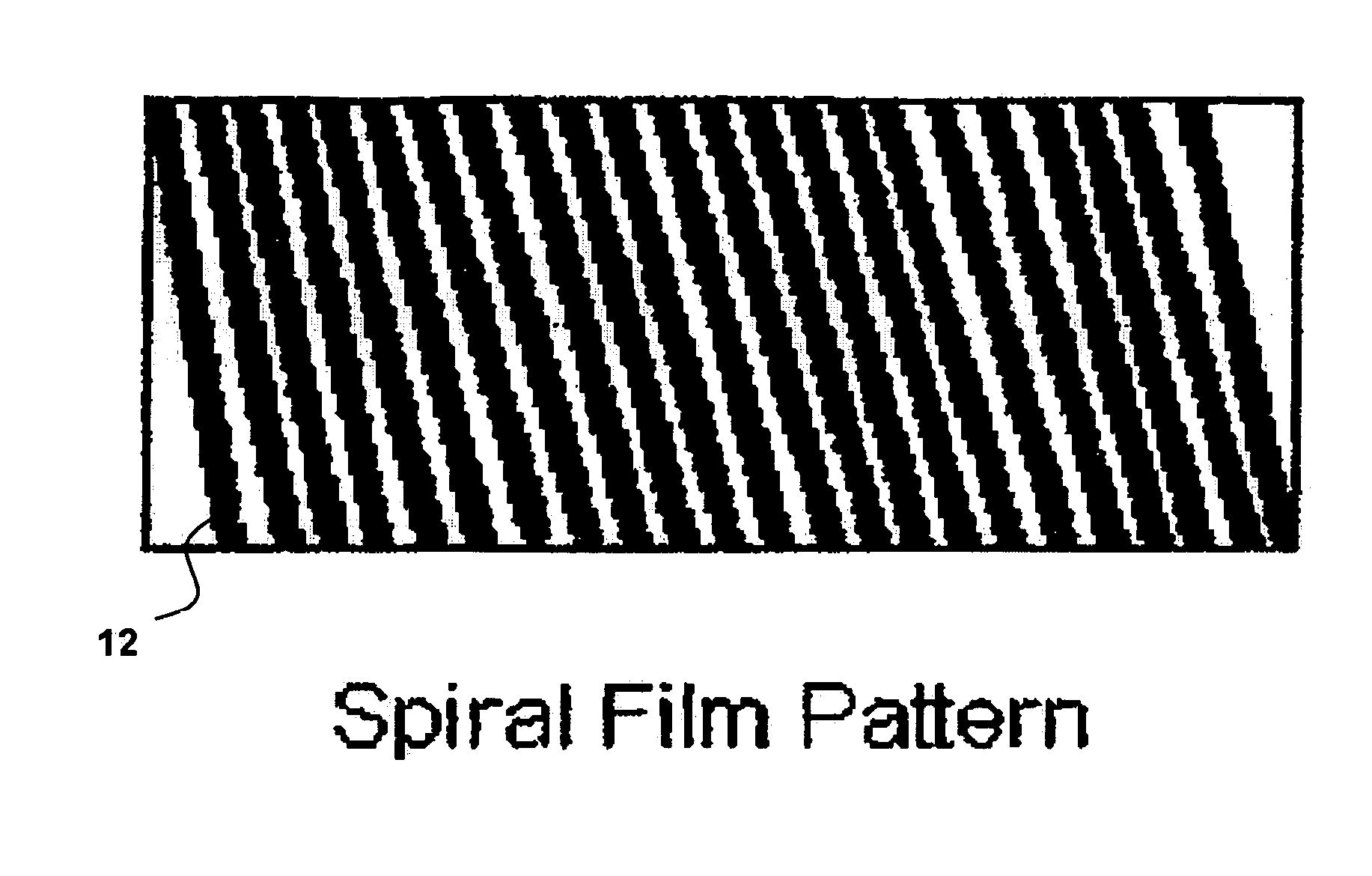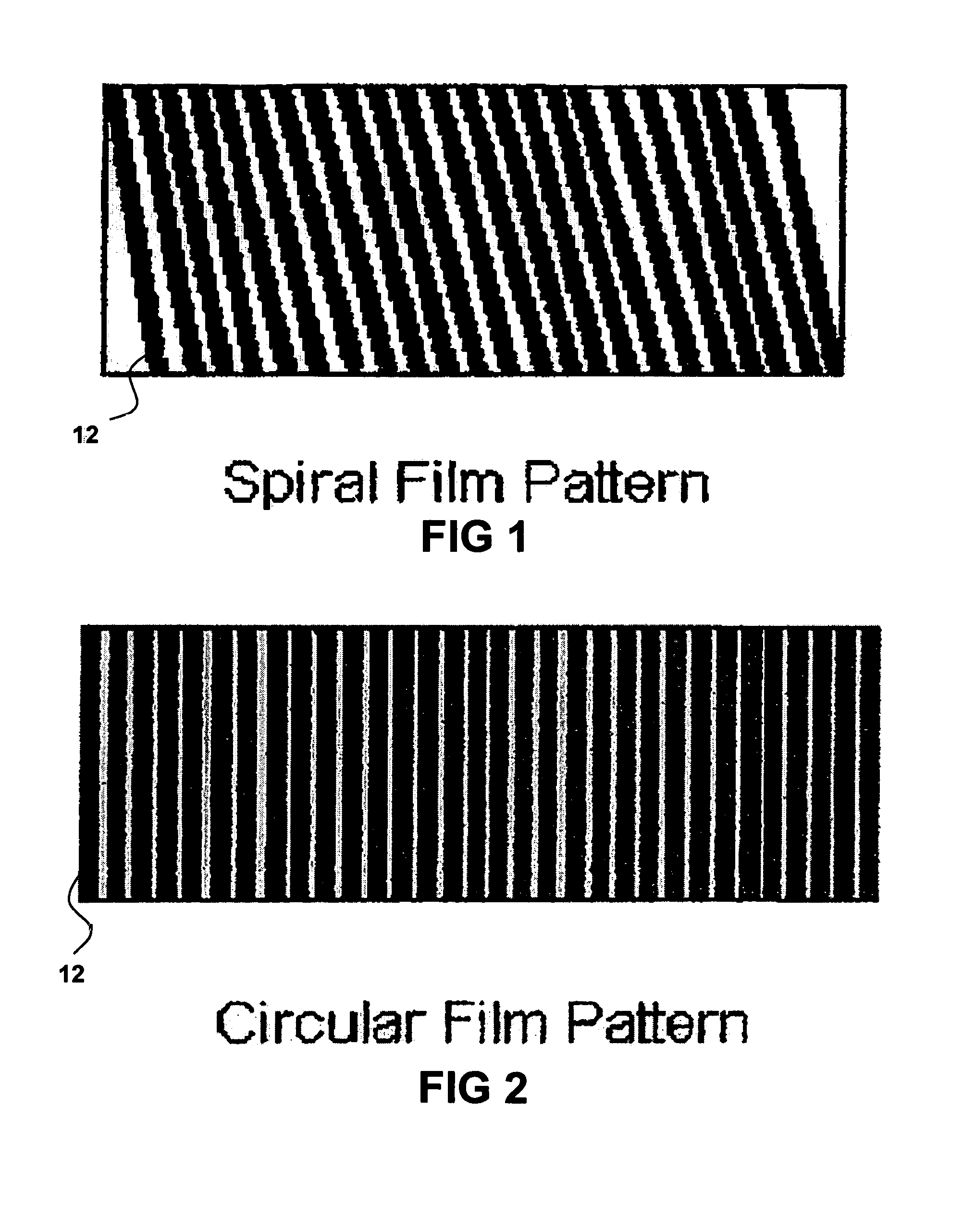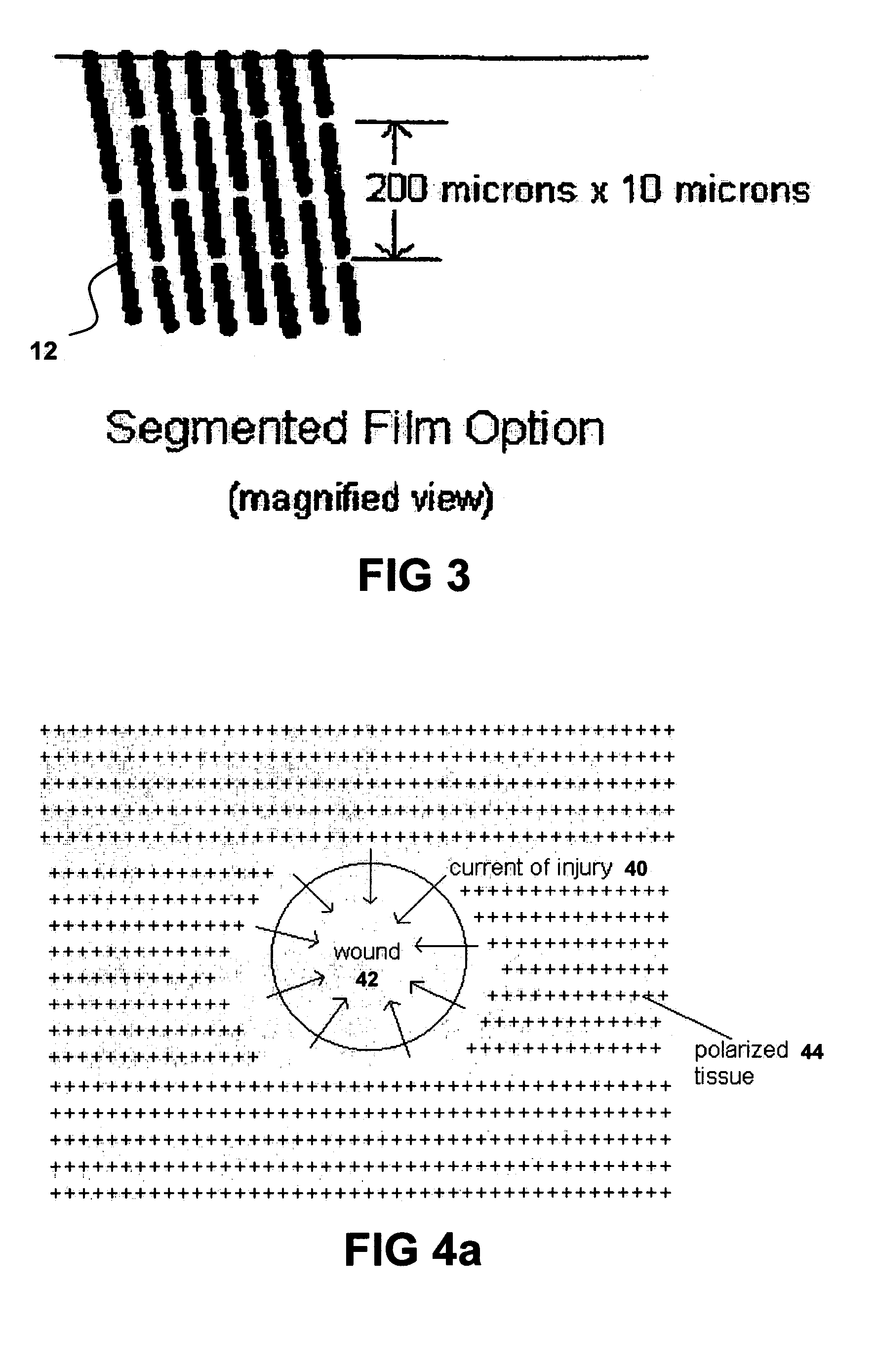Stimulation of cell growth at implant surfaces
a cell growth and implant technology, applied in the field of living organism implants, can solve the problems of poor human failure rate, insufficient vascularization, and remaining thrombogenic, and achieve the effect of improving the survival rate of human patients
- Summary
- Abstract
- Description
- Claims
- Application Information
AI Technical Summary
Problems solved by technology
Method used
Image
Examples
Embodiment Construction
[0047]The present invention is directed to medical devices that contain at least one tissue contacting surface that is configured to undergo a variation in surface charge in response to a time-dependent signal that is effective to enhance or inhibit cellular growth adjacent to, on, or within the at least one tissue contacting surface.
[0048]For example, variations in surface charge can be established using a number of techniques including phasic, electrical stimulation using one or more of the following techniques: (a) electrical techniques, for example, techniques in which an electrical potential is applied across two or more electrodes by directly (i.e., via conductors) or indirectly (e.g., via inductive or capacitive techniques) coupling the electrodes to a source of power, (b) electromechanical techniques, for example, by using materials such as piezoelectric or electrostrictive materials that produce a surface charge in response to mechanical deformation, or (c) by electromagnet...
PUM
| Property | Measurement | Unit |
|---|---|---|
| time constant | aaaaa | aaaaa |
| time constant | aaaaa | aaaaa |
| thickness | aaaaa | aaaaa |
Abstract
Description
Claims
Application Information
 Login to View More
Login to View More - R&D
- Intellectual Property
- Life Sciences
- Materials
- Tech Scout
- Unparalleled Data Quality
- Higher Quality Content
- 60% Fewer Hallucinations
Browse by: Latest US Patents, China's latest patents, Technical Efficacy Thesaurus, Application Domain, Technology Topic, Popular Technical Reports.
© 2025 PatSnap. All rights reserved.Legal|Privacy policy|Modern Slavery Act Transparency Statement|Sitemap|About US| Contact US: help@patsnap.com



